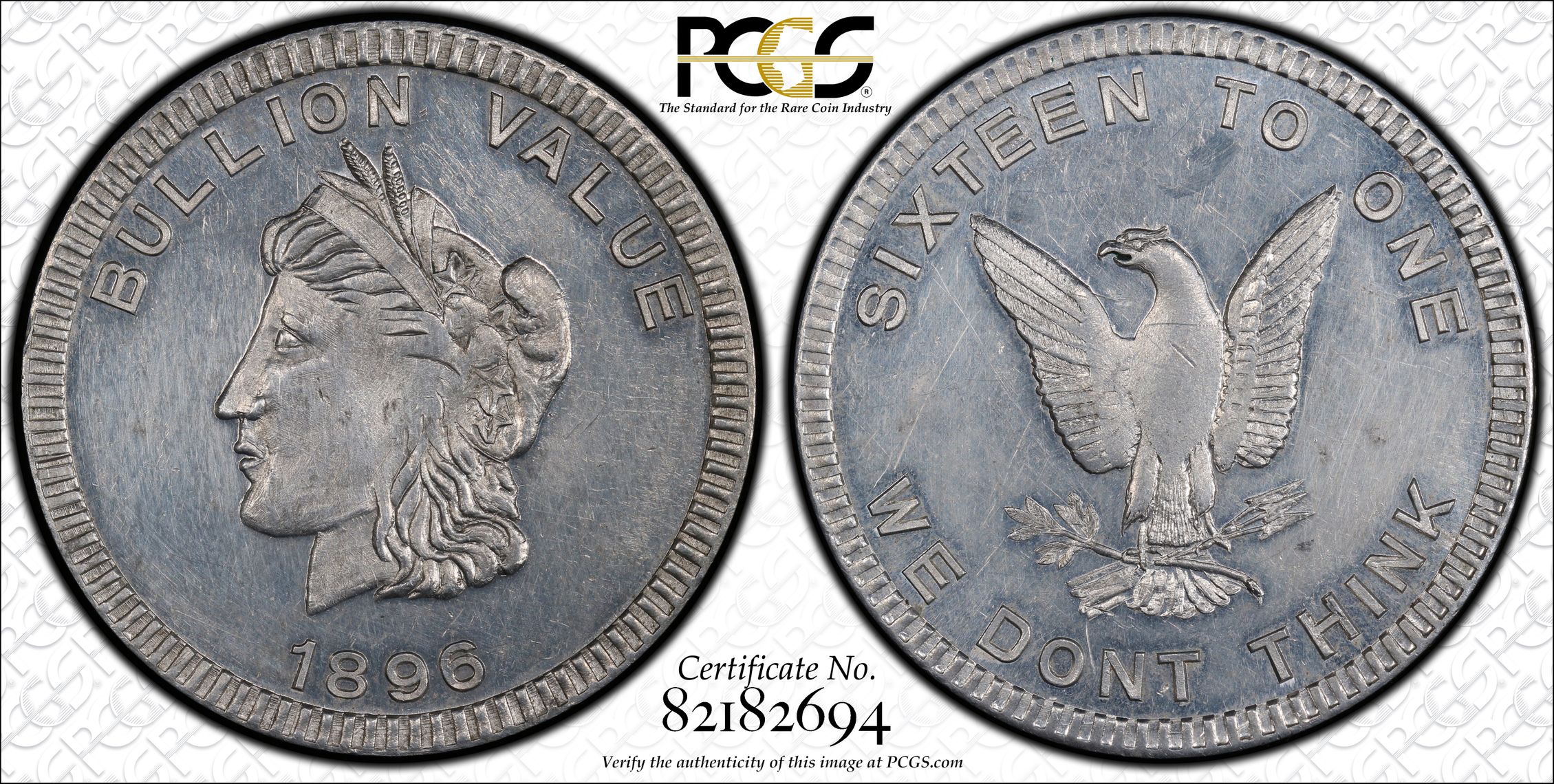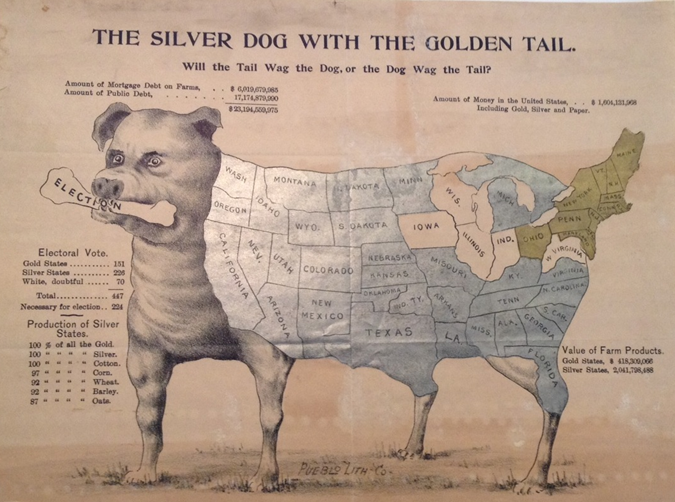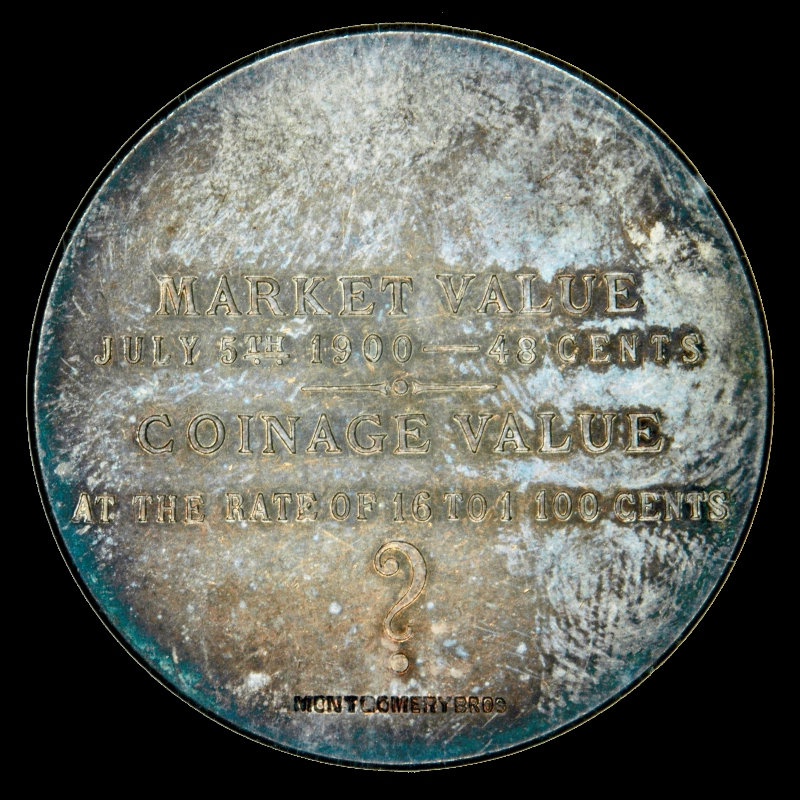Bryan Dollars.
 keets
Posts: 25,351 ✭✭✭✭✭
keets
Posts: 25,351 ✭✭✭✭✭
By my count there are perhaps 10 collectible varieties of Bryan So-Called Dollars, almost all of them being R-5 or R-6. I think a realistic estimate might be 1,000+ medals, that's probably high. They are a very popular and widely collected medal with many non-SC$ collectors chasing them.
I have been looking at Heritage listings over the past few weeks and it struck me that Bryan Dollars almost always seem to be available and seem to show up routinely in every major show auction. Why is that?? Are they listed and not sold, bought back by a consignor?? Are they bought/sold over a brief period of time and, hence, moving up in price(I don't see that)?? Are they being bought by collectors who lose interest quickly and flip them?? Is it possible that the rarity ratings are low and there are really a lot of Bryan Dollars that exist??
Al H.
Comments
Here's the list from HK. Are they all commonly available?
https://so-calleddollars.com/Events/Bryan_Dollars.html
I like Bryan Money, and I've found that the "United Snakes" tokens are very collectable with US Coin collectors. I dont think these are considered so called dollars, though.



Dead Cat Waltz Exonumia
"Coin collecting for outcasts..."
Almost makes me want to own one
Check out my current listings: https://ebay.com/sch/khunt/m.html?_ipg=200&_sop=12&_rdc=1
no.'s 1-10 are readily available as I posted, after that they range from prohibitively rare to unique, but I suppose you already knew that. the actual physical book is a better reference than the online version.
I agree and add mine. Many of them do seem to come up often but not in very nice condition.
.
.
1896 Bryan$ Sch-353 Aluminum United Snakes of America
.

.
1896 Bryan$ Sch-845 Aluminum Sixteen To One, We Don't Think
.
.
.
CoinsAreFun Toned Silver Eagle Proof Album
.
Gallery Mint Museum, Ron Landis& Joe Rust, The beginnings of the Golden Dollar
.
More CoinsAreFun Pictorials NGC FOR SALE
as always, every thread gains its own life and direction.
I will only say that I had hoped to discuss Bryan Dollars and not "Bryan Money" which is what's been posted thus far.
There are also other 1896 collectibles, such as the pro-silver flyer below, that have a similar theme.

RMR: 'Wer, wenn ich schriee, hörte mich denn aus der Engel Ordnungen?'
CJ: 'No one!' [Ain't no angels in the coin biz]
Here's one for you Keets. Ex Weber:


I thought that all of the “Bryan Dollars,” that were also listed as so-called dollars, were the silver pieces, which are called, “the comparative Bryan Dollars.” In that case, if they are being touted as rarities, as a group, they are not. The 1896 Gorham pieces are not rare at all. If you want one you can find them at most of the coin shows. The big problem is that a lot of them have been cleaned, dipped or have other problems.
There are some rare ones. The 1900 pieces are much scarcer as a group that then 1896 pieces. Pieces issued by Spaulding & Co. are scarce. The Tiffany & Co. pieces are scarcer still. It really comes down to what you want to collect. If you want one example, you can get an 1896 Gorham piece with no heavy lifting. If you are looking for one of the others, it can take a while, and you might end up going the auction route.
As a postscript, I was not aware that the satirical pieces, that were posted earlier, where in the so-called dollars book.
Bill, my main query is why these medals always seem to be available.
I think that they are more common that the rarity ratings previously cited. Of course if collector interest increases, they will become more difficult to obtain. They are much rarer than most any Morgan Dollar, but lower demand makes them look more common.
Rarities vary widely. I figure the commonest varieties as R-3 (population 501-2000).
As you say, the common ones are common.
Still popular, though.
I figure the commonest varieties as R-3 (population 501-2000).
this answers my last question in the OP but prompts two more --- Is this your assessment after time has passed since the publication of the second edition??? if not, why weren't the rarity listings in that edition more reflective of that??
Assessments change over time. We have 10 more years of population figures and auction appearances since the 2nd edition was published. As me again in another 10 years and I'll probably give you a different answer then also.
FWIW, my general approach is like this:
The most common cause for "skew" is with very common pieces, where they're so common that nobody wants to bother putting them into auction. Consider for example HK-460. Those "look like" rarer pieces, in terms of numbers of appearances. But since the whole point is that everyone knows they're common, it's easy to explain the numbers.